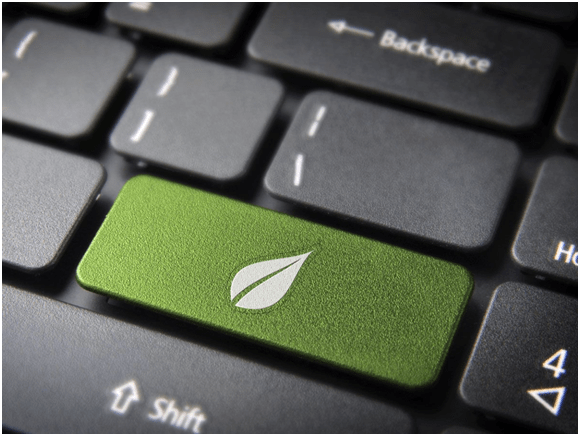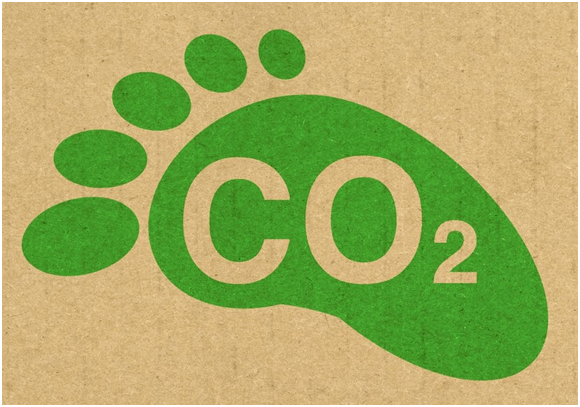Thanks to David Attenborough and Greta Thunberg gaining justifiable column inches and screen time in recent years, environmental concerns and new-found ideologies have subsequently become hard-wired into the mainstream.
As both of the abovementioned environmental campaigners have sought to highlight the devastating effects that plastics found in our oceans cause and raise awareness of global warming respectively, closer to home, we’ve all learned to adopt our lifestyles accordingly. In doing so, we can lessen the impact that our actions have on the planet we’re here to look after.
Office spaces upping environmentally-friendly efforts
This mantra has also crossed over from our more domestic arrangements to those of our work time, as we all aim to do our bit for the bigger environmental picture. What matters most is that, incrementally or by implementing wholesale changes, we rise to the challenge in various familiar, everyday scenarios.
In terms of the workspace, we’re talking about a range of measures you can adopt to reduce your carbon footprint. These measures include the following recommendations compiled by environmental experts.
Review your printing options/material output
Although many offices now have a lot less paper than they used to, it’s not always possible to do away with it in its entirety and go fully digital in terms of communications – especially if your business depends on paper. That could be especially true if, say, you run a stationary supplier or printing company – in which case, going wholly paperless isn’t even an option.
Nevertheless, even then, there are ways to ensure that your actions and investments work to minimize the impact of your carbon footprint. This can include opting for double-sided print and facilitating all-in-one printers, scanners and copiers instead of three separate power-sucking devices.
At the more advanced end of the spectrum and if your business focuses on the manufacturing of printed materials, it’s environmentally savvy to invest in energy-efficient automated printing installations. One such company operating at the vanguard of this short-run print finishing sector is Duplo International. Its brand-new DC-618 machine is cutting edge amongst the current thinking in slitters cutters creasers.
This particular treble-duty machine has been designed to perform up to 6 slits, 30 cuts and 20 creases in a single pass. Therefore, it’s ideal for producing a range of business stationary, such as business cards, postcards, brochures and book covers. It’s been engineered in a way which minimizes the setup of multiple jobs, while simultaneously automating the finishing processes.
Laptops, NOT desktops
To be honest, we shouldn’t imagine that many offices are still using desktop device in this day and age, as there’s a raft of alternative – and far less bulky – devices we can all use, from tablets through to laptops. However, if you still persevere with a PC tower et al, then it’s time to seriously rethink the avoidable carbon footprint this leaves – as, in comparison, a laptop is 80% more energy-efficient.
Set your computer to power-saving mode, and your laptop will use even less energy and electricity should you be sat in a HR meeting for two hours. Also, don’t forget to unplug all of your office devices at the close of play and set your computer to sleep.
Office rethink
Bring your office into the 21st Century by switching to LED and other energy-saving light bulbsto benefit the building’s energy usage. Overhaul your existing heating and cooling systems to ensure that they are operating at optimum levels – and, elsewhere look to perhaps decommission inefficient old boilers and replace them with more energy-saving and compliant assemblages.
Meanwhile, solar shading and transparent film can be installed at low costs to minimize glare and counter excessive heat during the summer months. However, opening blinds also plays a significant part in making your office space greener.
Did you know that welcoming natural light into your office improves both productivity and wellbeing? It also reduces the need for artificial lighting and so saves energy.
Even ensuring external windows aren’t letting heat escape is a sound starting point – while, conversely, keeping windows open in warmer seasons to let cooler air flow inalso helps the environmental cause.
Why not also consider the merits of motion sensors which automatically switch lights off in rooms that are not in use? Similarly, think about dimmable lights – which, again, will reduce electricity costs.
Oh, and office toilets. Install high- and low-flush options and use them appropriately. This simple improvement is statistically known to make a notable difference.

Recycle, recycle, recycle
Office hardware is, sadly, designed to become obsolete at some stage. Like gadgets found at home, most office-based electronics will reach the end of their lifecycle quicker than you might have imagined. The good news is that you can recycle your electronics, courtesy of various e-recycling companies – or, alternatively, manufacturer’s own take-back initiatives.
Of course, you should make sure that you’ve followed data-wiping procedures so as to maintain your cyber security before you go down the e-recycling route.
Other largely recyclable office-based items include plastic components and paper, while donating used office furniture benefits the environment as well.
Remote working
Finally,and especially since it is 2020, why not reduce your office’s carbon footprint more dramatically by remote working? Yes, home-working has become all the rage this year for one overriding and inescapable reason: a series of national lockdowns driven by a global pandemic. The environmental upshot here, however, is that the planet is healing.
Right nowand going forwards, it’s perfectly acceptable to telecommute – a working lifestyle practicality perpetuated by the surge in and use of office chat and videoconferencing software apps such as Skype, Slack and Zoom. These are new business bywords for 2020, whatever your business is. From an environmental perspective, working from home equates to reduced travel, office heating, lighting and airconditioning for a quiet start.

